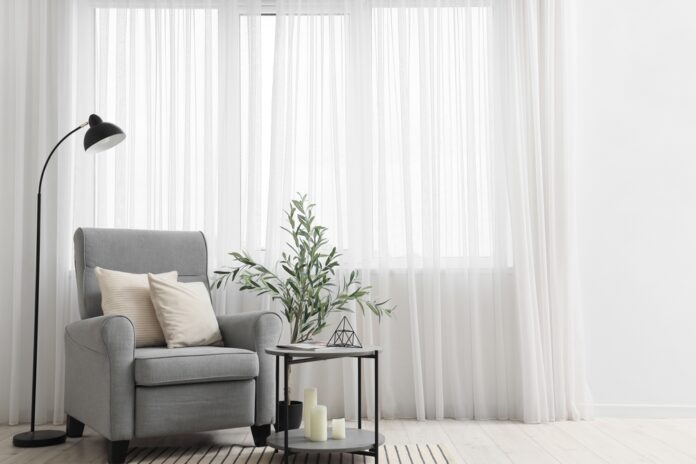Windows are more than just portals to the outside world; they’re key elements in our homes that influence how we feel and how our spaces look. The right window treatments not only enhance the aesthetics of your interior but also provide functional benefits like privacy, light control, and insulation.
Understanding Your Needs
Before selecting window treatments, consider the purpose they will serve in your home. Are you looking to block out light for better sleep, add a decorative touch to your living room, or improve insulation to reduce energy costs?
Types of Window Treatments
Curtains and Drapes
Curtains and drapes are versatile and widely used window treatments that come in various fabrics, colors, and styles. While curtains are often lighter and serve more of a decorative purpose, drapes are heavier, sometimes lined, and can block out light to provide privacy.
For a tailored look, consider hanging curtains high and wide to make windows appear larger and ceilings higher. When installing curtains, it’s recommended to hang them high and wide to enhance the room’s dimensions.
Blinds
Blinds are typically made from hard materials like wood, metal, or faux wood. They have adjustable slats that tilt to control light and privacy. Blinds are ideal for a more utilitarian look and are available in various styles to suit both traditional and modern interiors.
Blinds offer excellent light and privacy control with their adjustable slats. They’re highly durable and moisture-resistant, making them suitable for humid areas like bathrooms.
Shades
Shades are fabric-based window treatments that come in various styles, including roller, Roman, and cellular shades. They are excellent for controlling light while adding a soft touch to your décor.
Valances and Cornices
Valances and cornices are decorative top treatments that can conceal curtain rods and add a finished look to your window.
Factors to Consider
Aesthetics
Your choice of window treatment greatly influences the room’s aesthetics. Curtains offer more design versatility with a wide range of fabrics, patterns, and styles. They can create a dramatic, elegant ambiance or a light, airy feel depending on the material and color.
In contrast, blinds have a minimalist and utilitarian look, ideal for sleek, modern designs.
Functionality and Ease of Use
Consider how you will operate your window treatments. Blinds can be cordless or motorized for easy adjustment, which is especially helpful for hard-to-reach windows. Similarly, curtains can be fitted with track systems or motorization for smoother operation.
The ease of use varies with different window treatments, so choose one that fits your lifestyle.
Light and Privacy Control
For bedrooms and spaces where you require darkness, heavy drapes or blackout shades are ideal. Blinds allow for adjustable light filtering due to their tiltable slats.
Curtains with lining can enhance light control and privacy, and layering them can provide flexibility depending on the time of day.
Insulation
Window treatments can greatly affect your home’s energy efficiency. Thick curtains and drapes can provide better insulation, helping to keep rooms warmer in the winter and cooler in the summer.
Curtains often provide better insulation, especially when made from heavier materials. Blinds, however, are less effective at preventing drafts. According to The Shade Store, curtains generally insulate better.
Durability and Maintenance
Blinds made from materials like metal and faux wood are durable and easy to clean, requiring simple wiping with a cloth. Curtains’ durability and maintenance depend on the fabric; synthetic materials are generally more robust and easier to care for than delicate fabrics like silk.
The maintenance of your window treatments is an important consideration.
Cost and Installation
Blinds generally are more affordable due to using less material and have a simpler installation process. Curtains may involve additional components like rods and rings, potentially increasing the cost and complexity of installation.
According to The Shade Store, blinds typically have a lower upfront material cost compared to curtains.
Room-Specific Tips
Living Room
In living areas, you can afford to be more flexible with your window treatments. Combining shades with sheer curtains can create a layered look that is both functional and aesthetically pleasing.
Bedroom
For the bedroom, focus on functionality to ensure restful sleep. Blackout shades or heavy drapes can block out unwanted light and provide privacy.
The importance of light control in bedrooms cannot be overstated.
Kitchen and Bathroom
Kitchens and bathrooms often require window treatments that are durable and easy to clean. Consider blinds made from moisture-resistant materials or shades that can withstand humidity.
Customization and Professional Help
For a perfect fit and style that complements your home’s décor, consider custom window treatments. Companies like The Shade Store offer customization options and professional guidance.
If you’re unsure about measuring and installing window treatments, don’t hesitate to seek professional assistance to ensure the best results.
Conclusion
Choosing the right curtains and blinds for your windows is a vital aspect of your home’s interior design. By considering factors such as aesthetics, functionality, light control, and maintenance, you can select window treatments that not only enhance your home’s beauty but also meet your practical needs.


